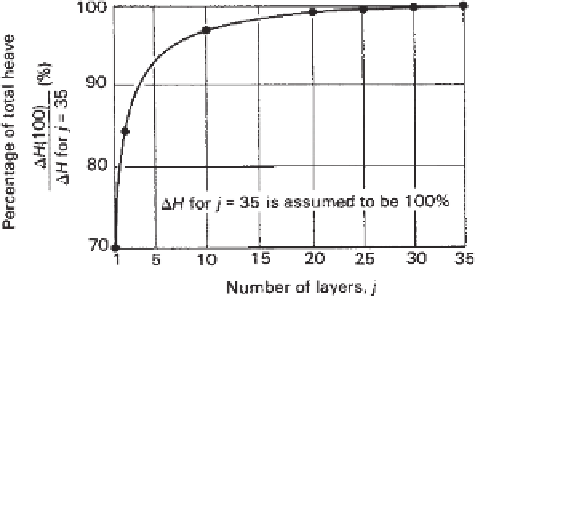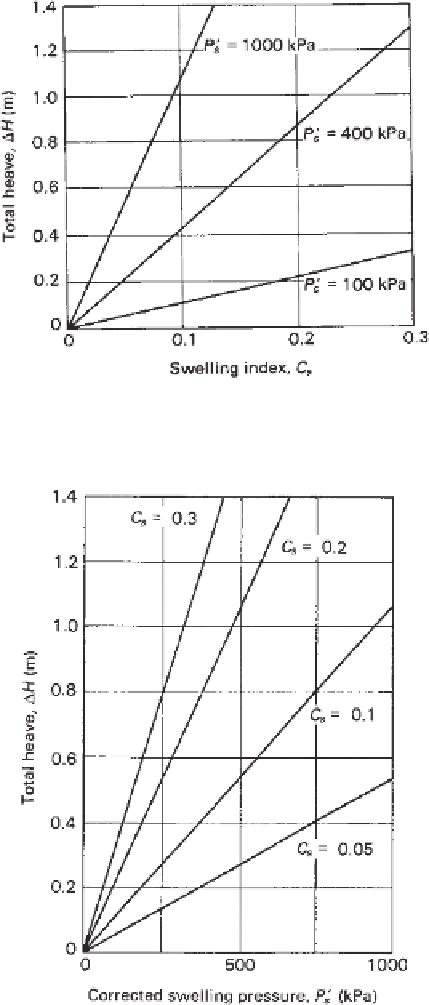Environmental Engineering Reference
In-Depth Information
14.23, and 14.25 for
h
i
,
P
0
i
,
and
P
fi
, respectively, into
Eq. 14.18. The total heave for the entirely wetted active
depth is the summation of the heave for each layer:
log
2
i
j
C
s
H
1
1
j
−
1
H
=
(14.26)
+
e
0
2
j
i
=
1
The computed total heave does not change significantly
when using more than 35 layers (i.e.,
j
35). Figure 14.44
shows the percentage of calculated total heave referenced to
the case of an analysis with 35 layers. The analysis can be
simplified as follows if it is assumed that 35 layers are used
in Eq. 14.26.
=
0
.
430
C
s
H
1
H
=−
(14.27)
+
e
0
Figure 14.45
Total heave versus swelling index for various val-
ues of corrected swelling pressure.
where:
i
=
1
log
2
i
−
1
70
.
35
1
35
−
=
0.430
computed value for the term,
The constant 0.430 in Eq. 14.27 approaches a value of
0.434 when an infinite number of soil layers are assumed for
a closed-form solution (Li, 1989). The total heave expressed
in Eq. 14.27 is later used as a reference when comparing
the amount of heave computed for different field conditions
(i.e., partly wetted active depth, excavation, and backfill).
In general, a total heave analysis using 10 layers will have
satisfactory accuracy.
Substituting Eq. 14.21 into Eq. 14.27 and assuming a unit
weight (i.e.,
ρg
)of20kN/m
3
and an initial void ratio
e
0
of
1.0 results in the following equation:
0
.
01075
C
s
P
s
H
=−
(14.28)
where
P
s
has units of kilopascals and
H
has units of
meters. The corrected swelling pressure and the swelling
index are the two primary variables involved in the predic-
tion of total heave. Figures 14.45 and 14.46 show the types
of plots which can be drawn from Eq. 14.28 to illustrate
approximate amounts of total heave for various swelling
Figure 14.46
Total heave versus corrected swelling pressure for
various swelling indices.
indices and swelling pressures. Total heave varies linearly
with both of the above variables. Viewed another way, it is
equally important to accurately assess both swelling pres-
sure and swelling index when analyzing an expansive soil
problem.
14.5.12 Effect of Correcting Swelling Pressure
on Predicted Total Heave
Correcting the swelling pressure for the effect of sampling
disturbance increases the change in void ratio, as shown in
Fig. 14.47. The calculated total heave for any expansive
Figure 14.44
Percentage of heave as function of number of layers
used in the analysis.












Search WWH ::

Custom Search